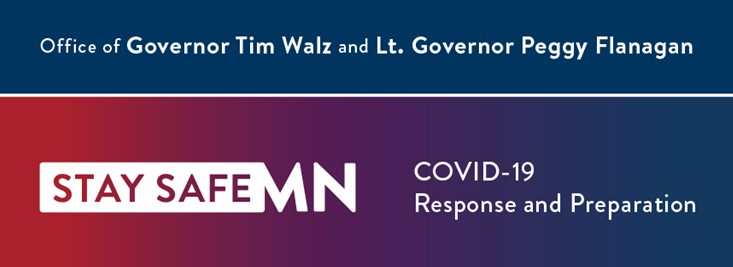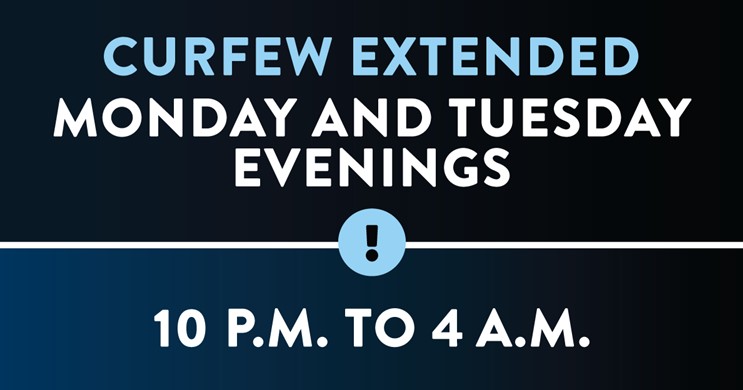
June 1, 2020
Updates from the Governor
The Governor today modified and extended the Minneapolis-St. Paul nighttime curfew through Wednesday morning to provide safety for Minnesota residents, neighborhoods, businesses and communities. Beginning tonight, the curfew will be in effect from 10pm to 4am.
“Having a curfew in place has allowed law enforcement to separate out those who mean to bring further pain and destruction in our communities from the thousands who have peacefully demonstrated for systemic changes in George Floyd’s name,” said Governor Walz. “I want to thank our public servants who’ve worked tirelessly to restore peace to our neighborhoods, and all Minnesotans who have abided by the curfew to keep our communities safe.”
During the curfew, no one is allowed to travel on Minneapolis and Saint Paul streets or public places, except for first responders, members of the media, people going back and forth to work, individuals seeking emergency care or fleeing danger, and people experiencing homelessness. Curfews are not limited to Minneapolis and St. Paul. Mayors and local governments across the state can issue their own curfews.
Though many protesters have worn masks and tried to maintain physical distance, the Department of Health (MDH) today encouraged people who have protested the death of George Floyd to seek a COVID-19 test, whether they have symptoms or not. However, public health officials caution that the incubation period following infection is between 2-14 days, and seeking a test too soon could cause Minnesotans who have the virus to test negative. MDH will release further guidance in coming days.

Everyone can work to reduce the spread of COVID-19
- Wear masks when in public. 10-50% of virus carriers are asymptomatic wearing masks helps control the virus and has been shown to lower COVID-19 spread.
- Avoid enclosed spaces with groups of people, where the virus can linger in the air for long periods of time.
- Get tested if you have cold or flu-like symptoms - Find testing locations.
- Stay six feet away from others.
- Cover your coughs and sneezes with your elbow or sleeve, or a tissue and then throw the tissue in the trash and wash your hands afterwards.
- Washing your hands often with soap and water for 20 seconds, especially after going to the bathroom or before eating. If soap and water are not readily available, use an alcohol-based hand sanitizer that contains at least 60% alcohol.
- Avoid touching your face – especially your eyes, nose and mouth – with unwashed hands.
- Up-to-date guidance is available from the Department of Health.
Resources
Coverage